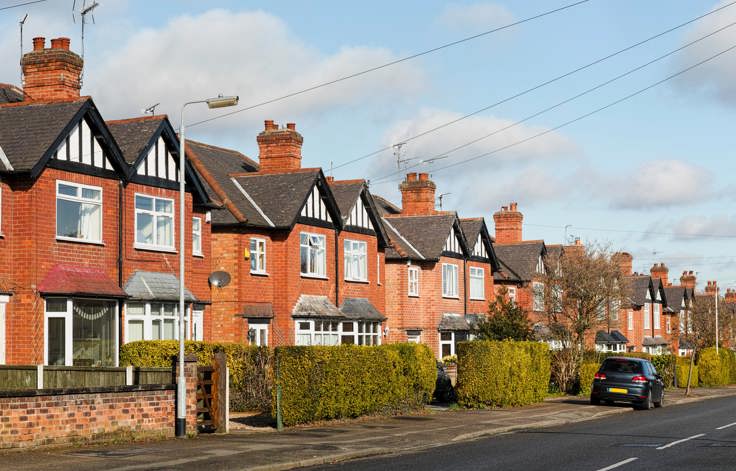An accurate property valuation you can trust
We'll help you to find the value of your property, so you can find a buyer or tenant as soon as possible.
Enter your details below to book a professional appraisal.
How can I find out what similar homes in my area have sold for?
Knowing what comparable homes have actually sold for is the strongest starting point for pricing, negotiating and planning your move. Sold-price evidence shows what the market has paid for properties like yours, not just what sellers were hoping to achieve. Our latest blog explains where to find reliable data, how to compare like-for-like, and how to avoid common pitfalls, so you can make confident and informed decisions.

Quick answer
- Use official sold data (e.g., Land Registry) and major portals for a first pass.
- Match properties carefully on type, size, condition, micro-location and outside space.
- Prioritise recent sales (last 6–12 months), then adjust for differences.
- Ask a local agent to sense-check and add context you cannot see online.
Where to find sold prices
Official records (England & Wales)
The most authoritative source is official sold price data. It records the legal transfer price once a sale completes.
- HM Land Registry: Price Paid Data - official sale prices by address and date.
- UK House Price Index - market trends (indices, not individual addresses).
Property portals (photos + context)
Major portals combine sold prices with photos, floor plans and marketing copy that help you understand condition and layout.
Local, on-the-ground insight
- Drive or walk your patch for recent "Sold" boards and note the agent names.
- Talk to Farrell Heyworth for sold prices, time-to-sell and buyer demand by street.
How to choose true comparables ("comps")
Sold data is only useful if you compare like-for-like. Start with a tight radius around your home and expand only if needed.
Match the fundamentals
- Property type: detached, semi, terraced, bungalow, purpose-built flat, conversion.
- Size: bedroom count, bathrooms, and (ideally) floor area in sq ft/sq m.
- Plot and position: garden size, orientation, off-street parking/garage, outlook.
- Micro-location: side of the street, road noise, proximity to schools/transport, flood zones.
- Condition/spec: new kitchen/bathrooms, extensions/loft conversions, energy upgrades.
Prioritise recency
Markets move. Focus on sales in the past 6–12 months; go back 18–24 months only if your area is thinly traded, and then adjust for market movement.
Use at least three strong comps
One great comparable can mislead; three to five reduce the risk of an outlier skewing your view.
Adjusting for differences (simple framework)
Two homes are rarely identical. After choosing your closest comps, make sensible, directional adjustments.
- Space: more bedrooms/bathrooms or larger floor area usually add value.
- Condition: turnkey finishes, modern kitchens/bathrooms and high EPC ratings command premiums.
- Outside space: south-facing gardens, parking and views add weight.
- Position: quiet cul-de-sac vs. busy road, school catchments, coastal/countryside outlooks.
- Market timing: adjust older sales for today's market conditions where appropriate.
Tip: Keep a simple table of your comps with notes (what's better/worse vs. yours) and a reasoned price range rather than a single number.
Special cases that need extra care
Leasehold flats
- Lease length: below ~80 years can impact value; extensions cost money and time.
- Service charge/ground rent: higher costs reduce what buyers will pay.
- Block/amenities: lift, concierge, parking, communal gardens can change values significantly.
New-builds vs. second-hand
- New-build premiums reflect warranties, spec and incentives; don't compare directly to older stock without adjusting.
- Beware incentives (stamp duty paid, upgrades) that don't show in headline prices.
Rural, coastal or unique homes
- Values vary by micro-setting (views, access, outbuildings, acreage).
- Comps might be farther away; weight agent insight more heavily.
Renovation projects
- Compare to other "doer-uppers," not finished showpieces.
- Sense-check the refurb budget and resale values before you buy or price.
Reading the story behind a sale
Numbers rarely tell the whole story. A strong local agent can explain:
- Whether the home needed price reductions or sold in a multi-bid scenario.
- If the property had title, survey or chain issues that affected the price.
- How long did it take to secure the buyer and the level of interest at launch?
A step-by-step workflow you can follow
- Define your patch: start with your street and a 0.25–0.5 mile radius (wider in rural areas).
- Pull official sales: export recent addresses and dates from HM Land Registry.
- Add context: look up those addresses on portals for photos, floorplans and descriptions.
- Pick 3–5 best comps: close matches on type, size, condition and micro-location.
- Make adjustments: note key differences (space, spec, garden, parking) and adjust your range.
- Sense-check live competition: compare with current listings to see what you're up against.
- Speak to a local expert: ask Farrell Heyworth to validate the range with live buyer demand, chain data and recent agreed sales.
Common pitfalls (and how to avoid them)
- Using asking prices: always anchor to sold prices first.
- Ignoring recency: older sales may not reflect today's conditions.
- Over-valuing upgrades: not every improvement returns pound-for-pound value.
- Forgetting costs: leasehold charges, parking permits and flood risk all affect what buyers will pay.
- Missing the chain: completed sales without chains can achieve a premium for speed/certainty.
How agents use comparables to set strategy
Sold prices establish a realistic range. Then we overlay:
- Buyer pool: how many proceedable buyers are active in your bracket now.
- Stock levels: how much competing property is available this month.
- Launch timing: seasonality and local events (schools, tourism, major employers).
- Marketing plan: photography, copy, video, open days and pricing tactics to maximise day-one impact.
North West perspective
Across Lancashire and Cumbria, values can vary street-to-street based on school catchments, commuter links, proximity to coast or fells, and tourist appeal. That's why a local lens matters: two nearly identical homes can achieve different outcomes depending on their micro-location and current buyer demand in that suburb or village.
What if there are no close comparables?
- Widen radius and timeframe carefully, then adjust for differences.
- Weight floor area (price per sq ft/sq m) more heavily if available.
- Lean on local agent evidence from recent agreed sales not yet published.
Turn research into action
- Sellers: price within your evidence-based range to capture early demand and reduce time on market.
- Buyers: use comps to calibrate offers and to prepare for lender valuation.
- Investors: benchmark rent and yield against sale prices and expected refurb costs.
Get tailored advice for your street
Online tools are a great start, but they cannot capture every local nuance. Farrell Heyworth combines official sold data, live buyer feedback and on-the-ground experience to give you a clear pricing range, advice on when to launch, and a plan to achieve the best result.
What you'll get from a valuation with us
- Hand-picked comparables with reasoning for each adjustment.
- Insight on current buyers in your price band and how quickly they're offering.
- A marketing strategy designed to maximise your first two weeks on market.
Finding out what similar homes have sold for is straightforward; interpreting the data correctly is where value is created. Focus on recent, like-for-like sales, adjust carefully, and seek a sense-check from a local expert. With the right evidence and strategy, you can price confidently, attract serious buyers and move on your timeline.
Related Posts
How Do I Choose the Right Estate Agent to Sell My House?
Start With Local Expertise Property markets vary from town to town - and even street to street. A strong local…
What Happens If There Is a Dispute After Completion (e.g. Damage, Missing Items)?
Although ownership transfers at completion, buyers still have legal rights if the seller has breached the contract or failed to…
UK & North West Housing Market Update: August 2025 Data and What It Means
Headline UK Figures According to the HPI, the average property price in the UK in August 2025 was £273,000. Annual…



